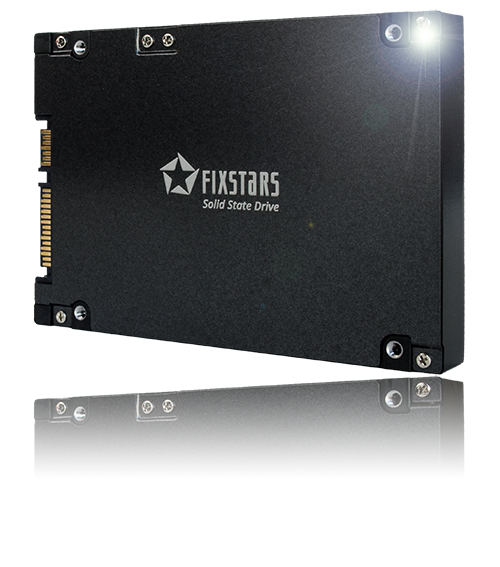Even though SATA3, the interface used by the SSD-13000M, is no longer the fastest around, the drive developed by Fixstars is still remarkable, mainly because of its size.
Just when we thought that the 4TB SSDs unveiled at CES 2016 would be the largest one we’d see this year, Japanese software company Fixstars has unveiled a 13TB model, which even surpasses the storage capacity of hard-drives. With a motto that says “Speed Up Your Business” and applications that include object storage and streaming content distribution, it’s no wonder that Fixstars’ mammoth SSD isn’t exactly aimed at home users. The price tag makes it unapproachable, as well, so regular consumers might have to look into other options.

“Continuing the development of the world’s highest capacity SSD product line, we are pleased to take capacity one step further and present the SSD-13000M,” explained Satoshi Miki, Fixstars’ CEO. “The Fixstars SSD series has been highly regarded for their distinct reliability on steady read/write performance that lasts over time. Having met user expectations for higher capacities, Fixstars will continue to innovate and provide unique storage solutions to it’s customers in Japan and in the U.S.”
The 580/520 MBps sequential read/write speeds may not seem like much in the context of today’s SSD market, we need to keep in mind that the SATA3 interface is capped at about 600 MBps. M.2 drives can achieve much higher speeds, but their physical dimensions can limit their capacity. The smarter thing to do would have been to create PCIe cards that not only would’ve been able to accommodate that many memory chips, but also would’ve been a whole lot faster.
The manufacturer used 15nm MLC NAND for this drive, which is somewhat of an industry standard nowadays. The MLC (multi-level cell) memory element is somewhat better than TLC (triple-level cell) as it allows more writes to the memory. Thus, MLC drives have a longer life, and it would take tens of petabytes to reach the write limit of this particular SSD. By the time that happens, there will be drives around with several times SSD-13000M’s capacity, not to mention with several times the speeds.
Fixstars is already taking orders for this SSD and will start shipping it to US customers in late February. Even though this aspect hasn’t been addressed in the press release, the SSD is said to cost $13,000. Sure, that’s a lot cheaper than what Intel high-capacity drives cost now, but on the other hand, users would be able to achieve the same capacity for a much smaller amount of money if they bought multiple drives and a SATA controller. Overall, I don’t think that even big businesses are willing to spend that kind of money on large capacity storage solutions like the one developed by Fixstars. There are many more affordable options out there that don’t cost business owners an employee’s arm and leg to buy.
Be social! Follow Walyou on Facebook and Twitter, and read more related stories about the world’s first helium-filled 10TB HDD developed by Western Digital and HGST, or Xbox One’s support for external hard drives.










